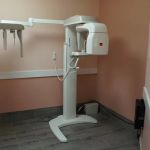Understanding the Stages of Gum Disease: A Complete Guide to Prevention and Treatment
- Stage 1: Gingivitis - The Early Signs of Gum Disease
- Stage 2: Periodontitis - When Gum Disease Progresses
- Stage 3: Advanced Periodontitis - The Severe Stage of Gum Disease
- Treatment Options for Gum Disease
- Preventing Gum Disease: Essential Steps
1. Stage 1: Gingivitis - The Early Signs of Gum Disease
Gingivitis is the earliest stage of gum disease, often resulting from poor oral hygiene that allows plaque to build up on the teeth and gums. The early symptoms of gingivitis include redness, swelling, and bleeding gums, especially when brushing or flossing. At this stage, the damage is reversible with good oral hygiene practices.
In fact, a story from a recent dental study highlighted the importance of addressing gingivitis early. A patient named John noticed mild gum irritation but brushed it off as nothing serious. However, after a routine dental checkup, it was revealed that his gingivitis had not been treated and had started to progress into periodontitis. This illustrates the importance of regular checkups and paying attention to early signs like bleeding gums.
2. Stage 2: Periodontitis - When Gum Disease Progresses
As gingivitis progresses without treatment, it can evolve into periodontitis. At this stage, the infection reaches deeper into the tissues surrounding the teeth, causing the gums to recede and the bone to weaken. Symptoms include persistent bad breath, receding gums, and pockets forming between the teeth and gums.
Take Sarah's case, for instance. After ignoring her gingivitis for months, she noticed that her gums were no longer just bleeding but also pulling away from her teeth. Her dentist confirmed that she had entered the periodontitis stage, requiring more aggressive treatment to prevent tooth loss. Periodontitis can lead to irreversible damage if not properly managed.
3. Stage 3: Advanced Periodontitis - The Severe Stage of Gum Disease
Advanced periodontitis is the final stage of gum disease, where the damage to the gum tissue and bone can be extensive. At this stage, the patient may experience loose teeth, severe pain, and significant gum recession. The infection can spread beyond the gums to affect the bones that support the teeth.
David’s experience with advanced periodontitis serves as a cautionary tale. By the time he sought treatment, many of his teeth were loose, and the bone loss was so severe that he required surgical intervention to restore his oral health. This stage emphasizes the critical need for timely intervention to prevent severe damage.
4. Treatment Options for Gum Disease
The treatment for gum disease depends on its stage. For gingivitis, improved brushing and flossing techniques, along with professional cleanings, are usually enough. For periodontitis, treatments may include scaling and root planing, laser therapy, and sometimes even surgery to restore lost gum tissue. In advanced cases, tooth extraction and dental implants may be necessary.
It's important to understand the treatment options available and consult with your dentist to determine the best plan of action. Early intervention can prevent the need for more invasive treatments later on.
5. Preventing Gum Disease: Essential Steps
The best way to handle gum disease is to prevent it from occurring in the first place. Brushing twice a day, flossing daily, and visiting the dentist regularly are the cornerstones of effective gum disease prevention. Additionally, avoiding smoking and managing conditions like diabetes can reduce your risk significantly.
Using a high-quality toothbrush and toothpaste, along with regular professional cleanings, can help keep your gums healthy. A recent survey showed that individuals who maintained a consistent oral care routine were significantly less likely to experience severe gum disease, highlighting the power of prevention.
If you’re looking for a way to prevent gum disease from progressing, consider investing in oral health products designed to combat plaque and bacteria. Learn more about the latest products that can help you maintain your gum health.







 Garden State Smiles of Matawan4.0 (502 review)
Garden State Smiles of Matawan4.0 (502 review) Frank F. Nia, DMD, MSEd5.0 (1 review)
Frank F. Nia, DMD, MSEd5.0 (1 review) Anthony Vuong DDS5.0 (1 review)
Anthony Vuong DDS5.0 (1 review) Cerritos Dental Surgery5.0 (137 review)
Cerritos Dental Surgery5.0 (137 review) Don Swearingen5.0 (18 review)
Don Swearingen5.0 (18 review) Richmond Pediatric Dentistry and Orthodontics4.0 (53 review)
Richmond Pediatric Dentistry and Orthodontics4.0 (53 review) The Importance of Oral Health Education During Pregnancy for a Healthy Pregnancy
The Importance of Oral Health Education During Pregnancy for a Healthy Pregnancy Best Tips for Brushing Your Teeth Properly for Healthy Gums: Essential Techniques for Oral Health
Best Tips for Brushing Your Teeth Properly for Healthy Gums: Essential Techniques for Oral Health Why Skipping Dental Checkups Can Lead to Bigger Oral Health Problems
Why Skipping Dental Checkups Can Lead to Bigger Oral Health Problems Advantages of Porcelain Dental Restorations
Advantages of Porcelain Dental Restorations How Can Diabetes Cause Tooth and Gum Problems? Preventing and Managing Oral Health Issues
How Can Diabetes Cause Tooth and Gum Problems? Preventing and Managing Oral Health Issues Healthy Habits for Promoting Good Oral Health and Hygiene: Tips for a Healthy Smile
Healthy Habits for Promoting Good Oral Health and Hygiene: Tips for a Healthy Smile